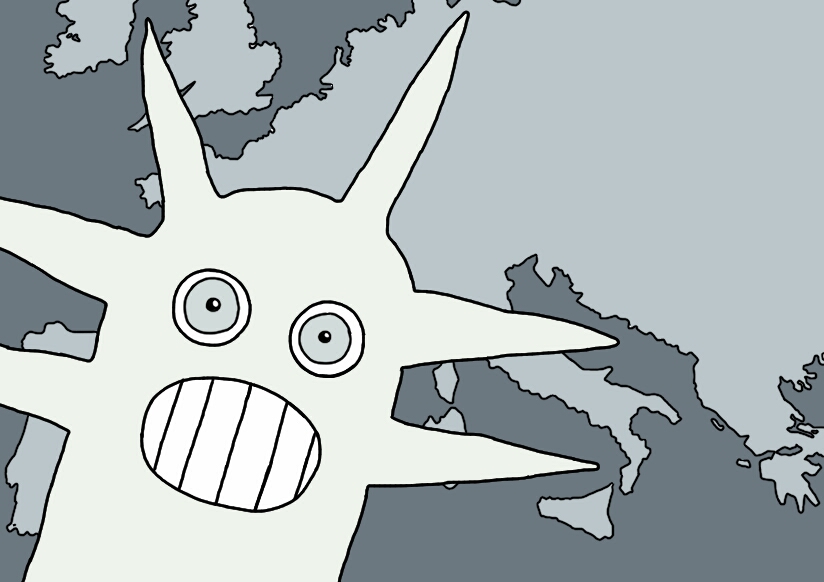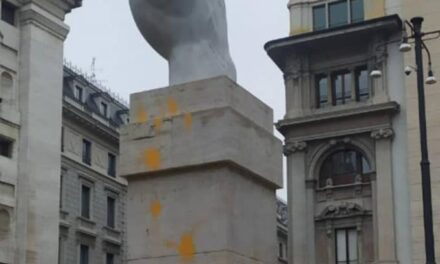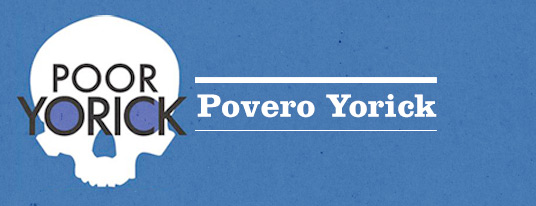by RICARDO NORONHA*.
Taking the blue pill
Far removed at the western tip of Europe, like the cousin one occasionally hears about, the ‘P’ that starts the ‘PIGS’ has been the subject of a thorough marketing operation that displaced its position in the European imaginary, from being ‘the next to follow Greece’ to becoming the success story of adjustment under the Troika and the ‘good student’ of austerity policies in the Eurozone. In spite of more recent warnings by the IMF, according to which the meagre economic recovery of the last year stands on shaky ground and can be offset at the slightest rise in oil prices or interest rates in the international markets, Portugal is frequently incensed by the German government and Eurocrats of all sorts as ‘the case that went well in Southern Europe’. A slight increase in exports (including revenues from a tourism boom in Lisbon and Porto), a precarious (and fading) trade balance equilibrium achieved through massive cuts in public spending and wages, extra revenues from a privatization plan that brought in investment from State-owned Chinese companies and Angola’s plutocratic elites (real estate purchases also increased significantly after several licensing rules were ‘simplified’ and special visas were conceded to big investors), are usually referred as proof that expansionary austerity is possible and that the failure of the policies prescribed by Troika in Greece is due to endogenous causes, beyond the reach of the European Central Bank, the European Commission and the International Monetary Fund. Simplifications such as these are bound to find traction in the international media, just as happened around the time the Memorandum was signed, in 2011, when the Portuguese, like the Greeks, were portrayed as ‘lazy big spenders’ that would soon be joined by the rest of the Southern European countries.
The fairy tale of Portugal as a ‘success story’ – even if we ignore the massive social cost it implied, with poverty affecting over 20% of the population (reports of hungry children passing out at school became frequent) and unemployment reaching a historical high of 17% (in spite of successive attempts by the Government to disguise the numbers with all sorts of publicly funded internship programs), resulting in mass emigration of over five hundred thousand people (the precise number is difficult to determine, but it is reasonable to admit that it was equivalent to 5% of the population) – is based on a persistent attempt to forget that none of the targets included in the memorandum (namely reduction of the State deficit and State spending) were achieved and that the fundamental change occurred when the European Central Bank started buying Portuguese public debt without limitation, thus bringing interest rates down and ending the relentless attack carried out by financial investors against the Southern European countries’ sovereign debt since 2010. Massive changes in labour laws, extraordinary taxes imposed on retired people and wage workers, along with blind cuts across the public sector (mostly in the national health service and the public education service, while the police budget was raised) were undertaken without any visible impact on the country’s competitiveness, economic recovery or fiscal discipline, but the European Commission, the European Central Bank and the Eurogroup, who have been persistently harsh in their judgements of Greece and its need for further ‘adjustment’, have been more than happy to select whatever data best suited their political agenda, so as to invent ‘diligent student’ of austerity.
The political nature of this marketing operation is ever clearer if we recall its chronology: it was the quick electoral breakthrough by SYRIZA in Greece and PODEMOS in Spain, both underlining the immense failure of the politics of internal devaluation, that created the need for a success case to keep alive the narrative upon which austerity in the South is served to the public opinion and voters in the North of Europe. The particularly servile posture of the Portuguese government helped make this operation successful, in a deal that suited both sides, since its internal unpopularity and political isolation (just a year and a half ago it was under a barrage of criticism from even neoliberal hardliners, and no minister could risk walking the streets unless surrounded by a wall of police) could only be compensated through an equally deceiving narrative for domestic consumption, portraying its actions as a ‘painful but necessary remedy’ that would show positive results in the medium-term, just as both the European institutions and the ‘markets’ were starting to notice. By some sort of coincidence, this medium-term coincides with both the Portuguese electoral calendar (general elections for parliament will be held next October) and the Spanish one (late December), while unexpected (?) Greek elections made confrontation within the Eurogroup a major focus of international attention.
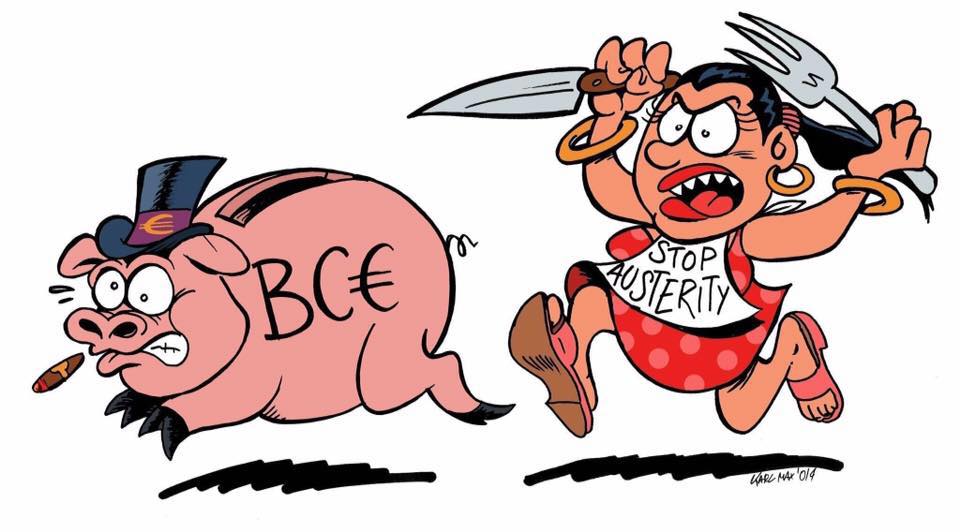 The political nature of the ‘crisis in the Eurozone’ thus emerges as what it has been right from the very beginning: a process of neoliberal social engineering carried out in Southern Europe as a testing ground for future application in the rest of the continent, aimed at expanding the reach of neoliberal governmentality, fully commodifying social relations and consolidating an institutional framework designed to expand markets and competition to all spheres of life1. This article will analyse both the profile of the austerity measures implemented in Portugal and their political management during the three years under the ‘Troika’ in order to provide some elements explaining why the political situation differs from the Greek and Spanish scenarios, while keeping to the perspective that the ‘crisis in the periphery of the Eurozone’ corresponds to a post-national phase of restructuring of capitalism in the region and cannot be read as a sum of national cases.
The political nature of the ‘crisis in the Eurozone’ thus emerges as what it has been right from the very beginning: a process of neoliberal social engineering carried out in Southern Europe as a testing ground for future application in the rest of the continent, aimed at expanding the reach of neoliberal governmentality, fully commodifying social relations and consolidating an institutional framework designed to expand markets and competition to all spheres of life1. This article will analyse both the profile of the austerity measures implemented in Portugal and their political management during the three years under the ‘Troika’ in order to provide some elements explaining why the political situation differs from the Greek and Spanish scenarios, while keeping to the perspective that the ‘crisis in the periphery of the Eurozone’ corresponds to a post-national phase of restructuring of capitalism in the region and cannot be read as a sum of national cases.
The secret of my succ€ss
Joining the EEC in 1986 amounted to a fresh start for the economic and political elites that have ruled Portugal since the revolutionary process was brought to a halt in 1975. After massive labour unrest and the nationalizations of the commanding heights of the economic apparatus (banks, insurance, energy and most heavy industry), the country went through two adjustment processes under IMF guidance (1977-78 and 1983-84), that brought wages down to their pre-1974 level (when striking was illegal and the political police kept its heavy hand on working class militancy) and paved the way for an upsurge in investment, fuelled by pouring in European funds and by a privatization process that enabled a recomposition of the Portuguese bourgeoisie. Living standards improved significantly, with unprecedented levels of consumption, education and health services, as foreign capital flowed and euro-optimism became a dominant feature of the political and cultural landscape. Just as happened in Spain or Greece, European capitalism showed itself willing to pay the price for full integration of a poor Southern country into the ‘Rich Democracies club’, in order to avoid the emergence of subversive threats at a decisive moment of the Cold War.
The Portuguese economy then started taking on the predominant features that characterized it until 2011. The construction sector went through a process of accelerated expansion, integrating vast numbers of unqualified peasants as wage-labourers, while the country was going through rapid deindustrialization paid for by the European Cohesion Fund (in fact, this was also true for its agricultural and fishing sectors), and used Structural Funds to modernize its public facilities (for the most part hospitals, schools and roads). At the same time, part of the country’s economic backwardness was preserved for political reasons, and an industrial fabric consisting largely of labour-intensive manufacturing units yielding absolute surplus-value (including not only low wages and counterfeit, but also unpaid extra hours and domestic child labour) was allowed to prosper and even received ‘structural funds’ that ended up in Swiss bank accounts and luxury goods. Portugal is one of the sole countries in the world where businessman are, on average, less qualified than wage workers, with the particularity that it is also the country in the EU with least skilled labour force2. This situation is both the result and cause of a historical inability to develop production of relative surplus-value, which in turn made the level of reproduction of labour-power and the need to politically control the working class a secular problem for the Portuguese bourgeoisie, traditionally handled through a combination of repression and emigration that made labour-power the country’s main export commodity3. Portugal is not only a provincial and peripheral country but also one in which the organized working class tends to be more modern and cosmopolitan, regarding its strategic outlook and the content of its struggles, than its employers. This structural feature helps to explain why both the Left and the Trade-Unions tend to thing and act as the most sophisticated fraction of Portuguese capitalism.
This cycle of economic growth – based on rising private consumption and public investment, with most of the largest local firms assuming a rentier profile and turning to non-tradable sectors that afford guaranteed gains – had several elements of vulnerability, as the balance of trade started suffering from competition from Eastern Europe and Asia (light consumer goods industries such as footwear, textiles and garments, which had very low wages as their main competitive advantage, were among the most dynamic industrial sectors during the 1980’s). The build-up to the Euro was the final stage, as the over-appreciation of the new common currency undermined the competitiveness of Portuguese exports even further while making it easier for the finance system to borrow abroad. Since the economy started cooling down, at the turn of the millennium, and financial analysts started insisting that this could not go on forever, there has been ongoing debate as to the need to make the labour market more flexible, cut down on State spending (both on welfare benefits and public sector wages), sell whatever State-owned enterprises are left and, broadly speaking, make the country more lean and mean. Trade-union resistance, the political unpopularity of some measures and the overall inertia of the party system prevented that debate from translating into government measures, while the Portuguese economy lagged behind all through the first decade of the century (unlike Spain or Greece, overall growth between 2000 and 2010 was below 1%, making it a ‘lost decade’ for growth, and the country didn’t experience any kind of real-estate bubble). As this situation matured, a programme of austerity and structural adjustment started being debated among the inner circles of economic and political power, with an eye on the coming depression and the need for the foreign intervention that would come with it. 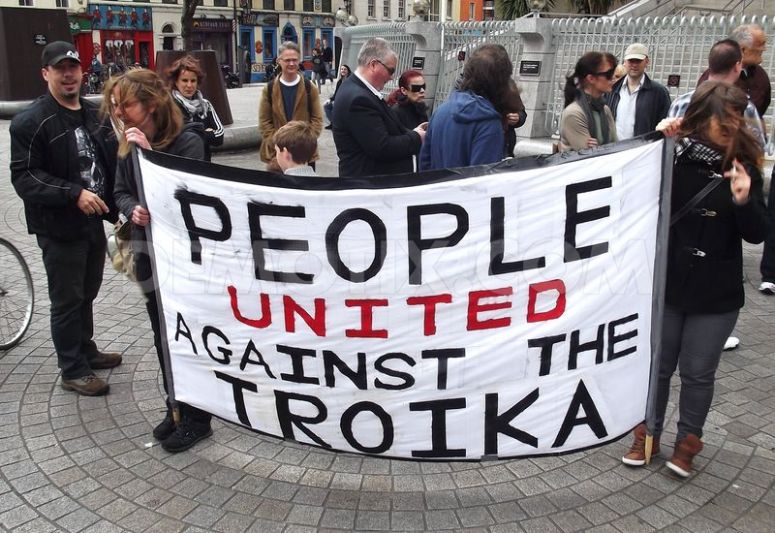 Far from being ‘imposed by the Troika’, the Memorandum agreement of 2011 would include most of the main features of this domestically-made programme, and, when Greece’s ratings started to slide, Portugal was the obvious country to follow. The sovereign debt crisis within the Eurozone was the perfect opportunity for the great leap forward that the Portuguese elites had been planning for a long time. The result is in plain sight.
Far from being ‘imposed by the Troika’, the Memorandum agreement of 2011 would include most of the main features of this domestically-made programme, and, when Greece’s ratings started to slide, Portugal was the obvious country to follow. The sovereign debt crisis within the Eurozone was the perfect opportunity for the great leap forward that the Portuguese elites had been planning for a long time. The result is in plain sight.
The latest report by the IMF – precisely because the Fund has little interest in the political implications of managing the Eurozone and is far removed from the strategic outlook that underlies the discourse in Brussels or Berlin – shatters the narrative of ‘Portugal as an austerity success story’ and is considerably more realistic in identifying the situation. Just to start with, Portuguese private debt is one of the largest in the world4, and any economic growth, however modest, is bound to contribute to the expansion of external debt, since the country’s balance of trade has always been negative except when recessive measures have drastically reduced the levels of consumption. As the Fund takes care to stress:
“The strength of the economic recovery remains modest, the labor market slack large, and there are still material vulnerabilities, notably, high leverage in the public and corporate sectors, and high external debt. Portugal is benefiting from favorable cyclical tailwinds, but growth is projected to moderate in the medium term. The initiation of ECB’s expanded asset purchase program pushed sovereign yields to record lows and effectively eliminated any remaining financing concerns. It should also help to raise inflation over the forecast horizon. A sharply weaker euro and lower oil prices have improved the short-term outlook”5.
The Fund’s report not only outlines the path that led the country to the situation of near-default in April 2011, but also explains quite clearly the country’s ‘recovery’ as a result of the ECB’s decision to support the euro in the financial markets by buying vast quantities of public-debt bonds from countries under speculative attack, thereby bringing down interest rates and allowing for what, in practical terms, amounted to a debt restructuring. The Portuguese government has spent the last couple of years borrowing at low interest rates from the ECB to pay up loans fixed at higher interest rates between 2008 and 2012. Without this early and unofficial version of quantitative easing, a second memorandum would have been inevitable (probably including a modest debt haircut) and the Portuguese would have found themselves exactly where the Greeks are now. In fact, what allowed for a change of script and explains Portugal’s improved economic performance was Draghi’s crude assumption that the policies set forth in the memorandums had failed, in Greece and in Portugal alike, and that the risk of contagion was becoming unsustainable:
“Portuguese bond spreads have declined considerably since early 2012, mostly driven by global factors. […] They have declined rapidly since that time with the turn-around widely credited to Mario Draghi’s ‘whatever it takes’ statement on July 26. […] Despite improved fundamentals, other factors seem to have been principally responsible for the decline in spreads. Plotting the average ratings of the three major agencies against 10 year bond spreads indicates a dramatic shift downward in spreads across the board. While average country ratings have improved modestly over this time period, Portugal would have required a significantly higher rating to have earned its current spread in the summer of 2012. Other indicators of economic fundamentals for Portugal such as the unemployment rate, GDP growth, public debt, and the current account balance support the same conclusion. Global factors have been the main drivers of spread compression”6.
If the Fund’s report moves firmly and deliberately away from the marketing operation underway for the last couple of years, it is evidently unable to single out the complex mediations that were met to allow for this change. ‘Global factors’ should be read as both the ECB’s and financial investors confidence that the Portuguese government would not diverge from the austerity policies it had adopted and would proceed towards its targets for budget control and internal devaluation. Institutionally, several signs were given by both the Portuguese government and the Portuguese President7 that there would be no U-turns in terms of policy and that all instructions from Troika representatives would be applied without discussion. The main difference was that, from the summer of 2012 onwards, such policies and targets had strong financial backing, which in turn afforded some fiscal relief and a minimum of manoeuvrability, essential for the country to avoid becoming politically unmanageable. And, ironically, the small economic recovery that followed was also partly a result of decisions by the Constitutional Court, which, despite the dramatic tone used by both the government and Troika representatives, rolled back several austerity measures, such as pension cuts and public sector worker wage reductions, thus preventing further contraction of the internal market and slightly boosting GDP growth.
What to make, then, of the three and half years under the memorandum and their impact on Portuguese society, insofar as most of the targets were missed, debt grew in proportion to GDP, and any rise in oil prices or interest rates will make the entire edifice quake and collapse? A possible answer is that the sovereign debt crisis, as well as all that followed it, was no more than a moment in the restructuring of European capitalism, a response to the fact that the a region was losing competitiveness and power in the world-system, a fast way to overcome all sorts of barriers to political status quo and to dismantle whatever was left of the ‘European social model’, starting with the continent’s soft belly. The embedded neoliberalism that characterizes the rules and framework of the Eurozone already implied most of the features of such a process, and its periphery became the perfect testing ground for the latter, ever since the credit rating agencies started their spelling contest from triple ‘A’ to triple ‘E’. A coherent mode of governmentality, comprising an expanding police state and ever-spreading commodification, along with the coexistence of different regimes of accumulation and distinct modalities of reproduction of the labour force, was already underway with the eastward expansion of the EU. But the possibility of advancing quickly in that direction was an opportunity that could not be missed by opening the credit tab early on (say, in 2010) and stabilizing the Eurozone in the short-run, allowing things to follow a slower pace. ‘Making lazy southern Europeans pay their dues’ was both politically popular in countries with positive external accounts and a powerful tool to restructure southern Europe, which would thus become more competitive and attractive for investors, even if that entailed massive social costs and, equally important, produced a decisive split between democracy at the national level and sovereignty at a supranational level. Had Quantitative Easing been adopted in the Eurozone as early as it was in the United States, the loans made by northern European banks to southern States and banks would have been just as secure, but that would not have allowed the massive restructuring of labour markets and the shrinkage of the Welfare State, provisions implicit in the Memorandum. Far from being the only way out of the debt crisis, ‘austerity’ was the quickest way to ensure European-wide internal devaluation in the long run. Austerity is not a harsh correction of a nation’s internal disequilibrium, an unpleasant but needed medicine to face a momentary financial malaise, but rather the banner under which Europe will be reshaped as an economic and political space in the years to come.
As Passos_Coelho, Portugal’s Prime Minister, said in the early days of the Memorandum, his government aimed at ‘going beyond the Troika’, taking advantage of the state of exception created by the abrupt decline of the Republic’s credit rating, in the early months of 2011, to introduce a whole set of otherwise impossible reforms of the labour market and the Welfare system. The situation has changed since those enthusiastic phrases were a common occurrence in the public sphere, but they illustrate in the crudest way the zeitgeist at play in ‘austerity’: favourable ‘global factors’ are the reward for those fully committed to governing against the governed, ‘no matter what the cost’ (another expression used by Passos Coelho when the ground under his feet seemed unbearably shaky). Such is the measure of its success.
Order prevails in Lisbon
In any given struggle, the success of one side is the other side’s failure. It’s broadly consensual that those who fought against austerity in Portugal were soundly beaten, even if that defeat included some minor sectoral victories, such as that won by the dock workers against port restructuring or by the public school teachers against the most aggressive rules on lay-offs agreed on in the Memorandum. Although it was for the most part obfuscated by larger and more radical mobilizations in Spain and Greece, the struggle against austerity in Portugal had its moments, rising between the global demonstration of October 15, 2011 and the autumn of the following year (when parliament cameunder siege twice and clashes with the police became commonplace in every demonstration)8. It is not easy to explain why a country that shares most of the common features of the other two social formations on the Southern European periphery, occupying a semiperipheral position in the World-system9 and following the same kind of economic and political trends for the past two centuries, differs from them in such a visible manner as regards the dynamics of protest and social conflict, even when it follows the international cycles of social struggles that periodically move across the continent. This visible difference between Portugal and the rest of the Southern European periphery is frequently attributed to particularities of its national character, according to which the Portuguese are a naturally ‘mild-mannered people’, prone to resignation and fatality instead of the anger and spirited resistance that characterizes both Spaniards and Greeks10.
Moving beyond from such approaches, and bearing in mind that, unlike the other two countries, Portugal didn’t experience a civil war in the 20th century, we can explain some of the differences by looking at the immediate past and identifying particularities in the political culture of the Portuguese Left, namely the way it contributed in shaping social conflict and political imagination in the past 40 years, in the wake of the revolutionary crisis of 1974-75 and of the Constitution that stemmed from it. The Left in Portugal – and I’m basically referring to the political parties usually labelled ‘radical left’, which stand to the left of the Socialist Party – is particularly strong at the institutional level (compared with what was formerly the case in Spain or Greece). This was due to a proportional system that, in the 2011 elections, for example, allowed parties with 7.91% (Portuguese Communist Party, PCP) or 5.17% (Left Bloc) of the votes to elect, respectively, 16 and 8 members of Parliament (another factor is the structure of local government, in which the PCP traditionally has quite a strong foothold in the South of the country.), providing them considerable amounts of money and resources with which to maintain a professional apparatus and a network of satellite organizations self-described as social movements/civil society. The political culture that both results from and contributes to this status quo combines the aim of defending the present content of the Constitution (which has been revised eight times since 1976, but is still considered too leftist by most right-wing politicians, employers and opinion makers) with the diffuse memory of the ’25th of April’ (that is, the combination between the actual events during the revolutionary process, the epic narrative of antifascism and a shared ethos of equality/social justice which permeates the vast majority of the population), comprising a whole set of symbolic, moral and aesthetic elements that contribute to integrating protest into the political system and, simultaneously, inviting protesters to mobilize in defence of the ‘legacy of the revolution’ or the ‘conquests of April’. To the left of this Left there are other, smaller and extremely verbal militant political groups engaged in fierce competition over who uses the most insulting tone/phrasing/terms to denounce both the bigger left and the other competing sectarian rackets, all of which are organized around a vaguely Marxist and explicitly anti-imperialist platform, and none of which diverge from the central aspects of the political culture sketched above, focusing their critiques exclusively on the leaderships they intend to replace.
 Social movements therefore usually function under the shadow of the political parties and tend to reproduce the latter’s discourse and strategic designs, remaining within what is acceptable in the light of their electoral objectives (for instance, refraining from breaking the law and challenging State authority). Not only that prevents those movements from being spaces for reinvention of political discourse and repertoire, as they usually end up fading away, once the suspicion of manipulation by a party bureaucracy gains momentum; they then, leaving behind them, as empty shells, designations and logos and spokespersons that periodically address the media, whenever a specific theme supposedly of concern to them (racism, sexism, lay-offs, etc) comes up in the news. Unlike most other countries in Europe, Portugal has not had any kind of student movement in the last decade, in spite of the continuous degradation of the educational system, rising tuition and social selection, increasing penetration of private interests in public universities and scientific research, and against a background of high youth unemployment (albeit lower than in Spain or in Greece). Even the trade-unions firmly in the PCP’s grasp (Confederação Geral dos Trabalhadores Portuguese, CGTP), although still the single most powerful organization outside the State apparatus (but only partially outside, since they receive considerable amounts of EU and government money), capable of rallying over two hundred thousand people in orderly and extremely well-staged demonstrations, have been constantly losing membership and remain strong only in the public sector, as deindustrialization pushed the bulk of worker’s militancy into early retirement. Needless to say, these social movements not only tend to focus on the short-term – opposing this or that measure taken by the government of the day and maintaining a defensive posture, in which they basically try to hang on to the situation they had previously denounced as unacceptable and against which they had previously struggled unsuccessfully – as they move within a conceptual framework which presents the nation as the natural space of political struggle and the state as the ultimate goal and main instrument of social transformation. This political landscape also includes some anarchist groups and the standard critical theory/alternative artistic scene, which remain far removed on the fringes while everything else is going on, and are reduced to a self-referential posture that matches the defensive attitude of the left. This was the music to which everyone danced until something entirely new entered the ballroom.
Social movements therefore usually function under the shadow of the political parties and tend to reproduce the latter’s discourse and strategic designs, remaining within what is acceptable in the light of their electoral objectives (for instance, refraining from breaking the law and challenging State authority). Not only that prevents those movements from being spaces for reinvention of political discourse and repertoire, as they usually end up fading away, once the suspicion of manipulation by a party bureaucracy gains momentum; they then, leaving behind them, as empty shells, designations and logos and spokespersons that periodically address the media, whenever a specific theme supposedly of concern to them (racism, sexism, lay-offs, etc) comes up in the news. Unlike most other countries in Europe, Portugal has not had any kind of student movement in the last decade, in spite of the continuous degradation of the educational system, rising tuition and social selection, increasing penetration of private interests in public universities and scientific research, and against a background of high youth unemployment (albeit lower than in Spain or in Greece). Even the trade-unions firmly in the PCP’s grasp (Confederação Geral dos Trabalhadores Portuguese, CGTP), although still the single most powerful organization outside the State apparatus (but only partially outside, since they receive considerable amounts of EU and government money), capable of rallying over two hundred thousand people in orderly and extremely well-staged demonstrations, have been constantly losing membership and remain strong only in the public sector, as deindustrialization pushed the bulk of worker’s militancy into early retirement. Needless to say, these social movements not only tend to focus on the short-term – opposing this or that measure taken by the government of the day and maintaining a defensive posture, in which they basically try to hang on to the situation they had previously denounced as unacceptable and against which they had previously struggled unsuccessfully – as they move within a conceptual framework which presents the nation as the natural space of political struggle and the state as the ultimate goal and main instrument of social transformation. This political landscape also includes some anarchist groups and the standard critical theory/alternative artistic scene, which remain far removed on the fringes while everything else is going on, and are reduced to a self-referential posture that matches the defensive attitude of the left. This was the music to which everyone danced until something entirely new entered the ballroom.
Things started to change as more and more people took to the streets, moved by old desires and compelling needs. It must be recalled that the austerity policies and the anti-austerity struggles both predated the Memorandum signed with the ‘Troika’ in May 2011, which followed three ‘Stability and Growth’ programmes that had failed to achieve any sort of budget balance in the previous year, but came up against a general strike in November 2010 and very large demonstrations nationwide in March 2011. From the very beginning, the movement that took the streets against internal devaluation was confronted with a set of choices which could be summed up crudely as follows: a) reproducing the institutional framework and logic of the Nation State, adopting strategies, goals and discourses compatible with the realm of classical politics and its division between representatives and represented, showing the respectable appearance of a concerned civil society engaged in enhancing and deepening the democratic process, criticizing austerity for being a ‘wrong’ political strategy that affected the prospects for sustainable growth and ‘national interest’, demanding a ‘normal life’ without precarity and defending the Welfare State; or b) challenging the established order by making the country ungovernable, self-organizing in a horizontal and informal way, developing an autonomous narrative of the crisis and a political imaginary against the nation and beyond Europe, creating thick social relations of solidarity and sharing, reinventing everyday life at each moment of struggle, looking for a way out of the twentieth century.
Needless to say, no clear line in the sand divided people who opted for one or the other of these two choices (and some, maybe most, never felt the need to choose at all), which could go hand in hand in the same demonstration, oppose State repression and support each other in difficult situations, but the coexistence was always fragile and hard to ensure, especially since the first option usually led to showing up on national television as spokespersons of those protesting on the streets, while the second often resulted in police persecution, judicial processes, demonization by the media, along with all the problems that arise while searching for new and different ways of organizing. Additionally, while those who stood for b) were usually in minority and gradually getting to know each other, there was always a large crowd of militant political groups competing to become the movement’s ‘revolutionary leadership’ and enthusiastic individual aspirants seeking their 15 minutes of fame in the eight o’clock news. The fact that both Lisbon (around 2 million inhabitants) and Porto (about 1,5 million inhabitants), are fare smaller than Madrid or Athens, and their city centres lack the urban density that characterizes, for instance, Barcelona, also helps to explain the material and logistical difficulty to establish stronger foundations to the movement in between the moments of mass mobilization11.
As the movement matured, with disobedience and illegality becoming a common feature in demonstrations and general strikes, while the Government proved incapable of managing protests and preserving the appearance of normality and social peace on which it based its strategy (which could be summed up in the phrase, constantly repeated as if it were a mantra, ‘Portugal is not Greece’), candidates to speak on behalf of the protesters started growing scarce.
This situation lasted until the unruliness of the streets and the ‘inorganic’ shape of the protests became unbearable to the Left, whose militants joined in to form a sort of government of the movement which, at the same time, presented itself as a horizontal group made up of random citizens, Que se lixe a Troika! (QSLT, ‘Fuck the Troika’). Leaving out both the smaller militant political groups and those, dismissively labelled as ‘anarchists’, who questioned the role of authority and representatives within the movement, QSLT called for a large protest against austerity for September15th, which benefited from the fact that the government announced the most blatant transfer of income from labour to capital (changing the rules of contribution to the social security system) two days earlier. The stage was, literally, set for protests to have not just a scheduled hour to begin but one to finish as well, usually after the speech by the ‘organizers of the demonstration’ and their interviews in the media had taken place. It was then that the Trade-Unions close to the PCP started joining what they had, until then, dismissed as ‘inorganic protests’.
While the good will and sincerity of the people involved with the QSLT is unquestionable, it is hard not to consider their efforts and choices some of the most decisive elements explaining why the anti-austerity protests reached their zenith (on March 2, 2013, around a million people were estimated to march in Lisbon alone) and then immediately started to fade away, to the point that it is hard now to remember they even occurred. On the one hand, QSLT benefited from unprecedented television coverage for a while, which – in a country where a comparatively high level of illiteracy makes the impact of television particularly noticeable – naturally translated into more (a lot more) people taking to streets. But this also went at the cost of denouncing or distancing itself from any clashes with the police and illegal acts by demonstrators (both at the demonstrations organized by QSLT and ones that were started by anonymous appeals in the social networks, as was the case with the two sieges of parliament in October 2012), so as to present itself as a constructive actor within the democratic process. At the same time, the political ties it maintained with the Left parties were cautiously kept secret, both regarding the affiliation of several members and the logistical support it got (namely stages with powerful sound systems capable of drowning out any other random voice). It wasn’t long before the competitive culture that characterizes the Left materialized at QSLT meetings, leading to reciprocal accusations by militants of both parties of take-over attempts by the other side. The internal balance of the platform started to give way as the media became increasingly aware of the extent to which it depended on the parties of the Left, and lost no time in revealing it. The open involvement of several members in electoral campaigns for local municipalities and the European Parliament, as candidates of either party, only made this more obvious.
As all this was rapidly unfolding, the growing intensity of the protests led to a particularly combative general strike on November 14, 2012, during which clashes with the police in front of parliament lasted several hours and culminated in a massive riot police charge that swept the square and surrounding streets, leaving behind a trail of wounded people and coming up against a mass of burning barricades. Several people were arrested under conditions that even the IGAI (police internal affairs disciplinary body) labelled as ‘blatantly illegal’. The days that followed were characterized by a massive political campaign in the media, including police use of raw footage of the demonstrations, along with several threats of house arrest against what the political establishment and public opinion unanimously described as ‘professionals of disorder’, i.e., militant anarchists with international ties to an imaginary revolutionary hydra who episodically materialize in waves of destruction in city centres. This fuelled widespread paranoia that took the initiative away from the thousands of people who had been defying the State monopoly of violence for months and handed it to those who wished for peaceful, orderly mass protests that would bring the government down: by demanding elections in which, the story went, it would be possible to take the struggle to the ballot box. Not enough has been said about the long-term impact of this restriction of politics and history to the realm of institutional possibilities , but it strikes the eye that, once the movement’s prospect became toppling the government and that proved impossible (given the scenario of an absolute majority in parliament with the firm backing of the President of the Republic), most people started feeling powerless and stopped believing their actions and mobilization would translate into any kind of practical result. The limits of this apparatus that brings together classical politics and street protests became even more clear when, only a year later, the CGTP called for a demonstration coming from the South and crossing the river bridge into Lisbon12. The government swiftly declared it illegal for security reasons and the CGTP was equally quick to turn it into a symbolic gesture, crossing the bridge by bus and starting the demonstration in Lisbon. The movement against austerity was now officially dead and all subsequent demonstrations only proved that order prevailed in Lisbon (and Porto, and Coimbra, and Faro). Politics had gone back to being the stuff you read about in the newspaper or watch on television, instead of being the shared experience of questioning the existing order and trying to think and act beyond it. Taking the struggle to the ballot box became a viable scenario once no struggle was left, and contributing to a sound reinforcement of the Left in parliament became the only game in town. We are still-dancing-again to the sound of this funeral march. Requiescat in pace.
A short epitaph
All this made the situation we are living in today possible. Since the ballot box is presented as the only means to change something in a situation in which something has to change, the urgency caused by the effects of austerity came to favour the quest for a Left capable of governing and breaking the traditional alternation between centre-right and centre-left. Lacking the impetus that pulled PODEMOS out of the squares and pushed it to the heart of Spanish politics or SYRIZA’s ability to address the streets and the markets simultaneously, while proposing an end to austerity within the Eurozone, the Portuguese Left remains trapped in the illusion that national sovereignty is the most suitable space for resisting neoliberalism, since it is at least formally democratic, in contrast to the technocratic and authoritarian nature of European integration. In this respect, the Left Bloc (founded on a left Europeanist platform) has made a visible rapprochement with the positions of the PCP (Euro-sceptical from the very beginning, even if it ceased campaigning against UE membership in the late 1990’s), and both parties now defend a negotiated exit from the Eurozone as a condition for a vaguely Keynesian-Developmentalist economic policy, capable of generating employment and enough GDP growth to pay for the Welfare system. The recent developments in negotiations between the Greek government and the ‘Eurogroup’ have given this perspective an additional boost and convinced a number of people who were sitting on the fence that a ‘Portuguexit’ would be the inevitable 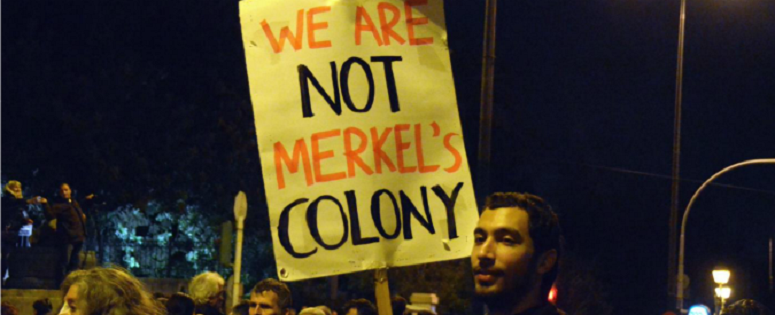 outcome of a rejection of austerity. This comes along with several preoccupying signs that Left-wing nationalism (which is usually dubbed ‘patriotic’ so as to avoid such an unpleasant term) and a whole rhetoric of ‘German Imperialism’ (sometimes going as far as ‘North European Imperialism’) are here to stay, as suggested by the latest billboard plastered all over the country by the Left Bloc, that include (in a blood-curdling show of political bad taste) – a picture of the Portuguese Prime Minister standing beside an approving Angela Merkel, with a phrase above in (apparently bad) German: ‘Eine Regierung die Deutscher als die Deutsche ist’ (‘A government which is more German than the German government’)13.
outcome of a rejection of austerity. This comes along with several preoccupying signs that Left-wing nationalism (which is usually dubbed ‘patriotic’ so as to avoid such an unpleasant term) and a whole rhetoric of ‘German Imperialism’ (sometimes going as far as ‘North European Imperialism’) are here to stay, as suggested by the latest billboard plastered all over the country by the Left Bloc, that include (in a blood-curdling show of political bad taste) – a picture of the Portuguese Prime Minister standing beside an approving Angela Merkel, with a phrase above in (apparently bad) German: ‘Eine Regierung die Deutscher als die Deutsche ist’ (‘A government which is more German than the German government’)13.
None of these candidates aiming to govern the country care to explain how an exit from the Eurozone could translate into anything other than much harsher austerity in the short run, with a highly doubtful possibility of improvement of living standards in an indefinable long run. However, the prospect of capitalizing on the generalized despair seems too powerful to be overlooked. And as the European institutions seem eager to show their utmost contempt for the democratic choices made in the peripheral countries, national pride and social impoverishment apparently dovetail well in the Left’s political narrative. Not much should be expected of the upcoming elections on October 4, 2015. As the Socialist Party (PS) has been in the opposition for the last four years – openly criticizing several measures taken by the government while refusing to explain how it would do things differently inside the Eurozone (leaving it would be unthinkable, since the PS is by far the most Euro-enthusiastic of Portuguese political parties and was quite successful in linking the project of European integration with the stabilization of the democratic regime) – it is now capable of positioning itself as an alternative to the right-wing coalition, with a project of ‘smart austerity’ which seeks to jump-start domestic demand by a combination of fiscal relief and more efficient use of European funds. The PCP should come out well, although far from becoming the Portuguese equivalent of SYRIZA (it took more than 12% in last year’s European Parliamentary elections of). The Left Bloc has suffered several splits in recent years and will likely be crushed as a result of what is generally known as the ‘useful vote’, by which left-leaning voters prefer to cast their swing votes for the PS rather than risk a right-wing victory. Several other parties that will be running for the first time will probably fail to elect anyone at all. The only good news in this department is that the far-right in Portugal remains extremely weak and has failed to win one single seat, unlike what is happening in Greece (and several other European countries). Since the governing coalition is making its campaign based on the need to combine fiscal and budget discipline with a concern with poverty and social inequality, the likely outcome of the elections will be a government that proceeds with the internal devaluation and neoliberal social engineering, while a left wing opposition regains what it lost in the previous elections and will lose again in the next, squaring the circle. The catastrophic nature of the situation is obvious: there is no real sovereignty left to make decisions that actually have an impact on people’s lives, unless people accept to live under considerably worse material conditions, making austerity, whether milder or harsher, the only available programme of government on a national level. And until that level is surpassed by a transnational movement of struggle against this state of affairs, we are left with the fiction of national elections for national institutions that are powerless to do anything other than apply the same programme, and then discipline and punish anyone that resists. Work is still under way in the Neoliberal laboratory of Southern Europe but, aside from that, all’s quiet on the Western front.
*Unipop activist, Lisbon collective.
This perspective has been developed in a text published in ROAR magazine, available at http://roarmag.org/2014/01/austerity-europe-neoliberal-laboratory/ ↩
A joint study of Portugal and Spain on this subject is available here ↩
This is one of the central subjects handled in Luís Trindade (Ed.), The making of Modern Portugal (Newcastle upon Tyne: Cambridge Scholars Publishing, 2013 ↩
Structurally related with housing acquisitions, private debt is based in a dual mechanism of household borrowing from Portuguese banks which in turn borrow from foreign banks (most of which are Spanish and French). This private debt also includes large amounts borrowed by major Portuguese firms to invest in the non-tradable sector, corresponding to the rentier pattern of accumulation that has characterized the native bourgeoisie since the early 1990’s ↩
IMF Country Report No. 15/126 (Portugal), May 2015, 2 ↩
Idem, 27 ↩
In Portugal, the main power of the President (elected by direct suffrage) is to call for the resignation of the government and for new elections should he or she feel that there is insufficient political stability or that the Constitution is being violated. ↩
A description and analysis of this wave of struggles, clashes, occupations and other forms of mobilization, is available in English in the Libcom website and in French on the Mondialisme website ↩
Cf. Arrighi, Giovanni (Ed.), 1985, Semiperipheral development – The politics of Southern Europe in the Twentieth Century, London, Sage ↩
An approach to this problem within the framework of Political Science and Social Movements Sociology can be found in Guya Accornero and Pedro Ramos Pinto (2014), “‘Mild Mannered’? Protest and Mobilisation in Portugal in Times of Crisis”, West European Politics ↩
Some of this difficulties, along with several other themes of interest to a foreign reader who wishes to know more about Portugal and its small ‘radical scene’, can be found on this interview to members of RDA69, a social centre located in Lisbon. ↩
A few hundred people had tried to do it spontaneously and without warning during a general strike in June 27 2013, inspired by a similar demonstration in Istanbul. They were stopped by the riot police and kettled for hours. ↩

